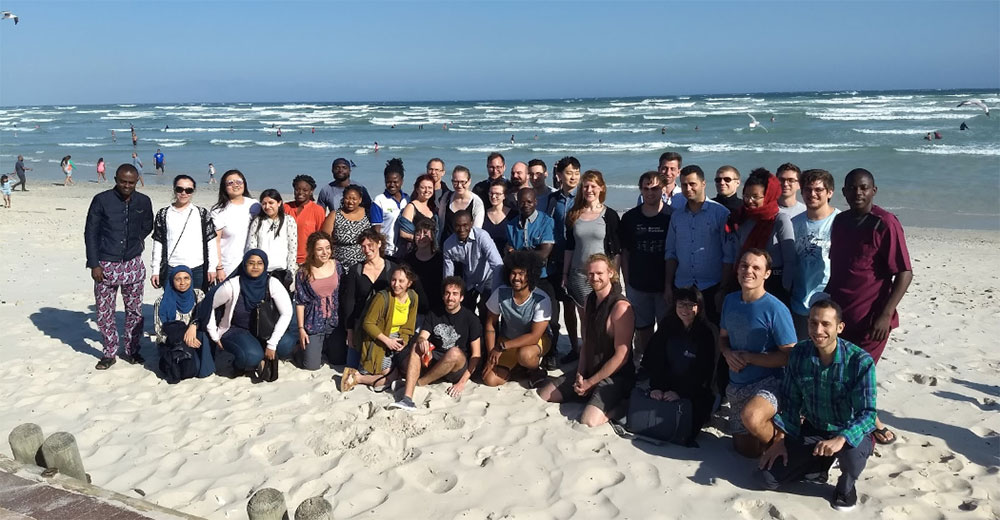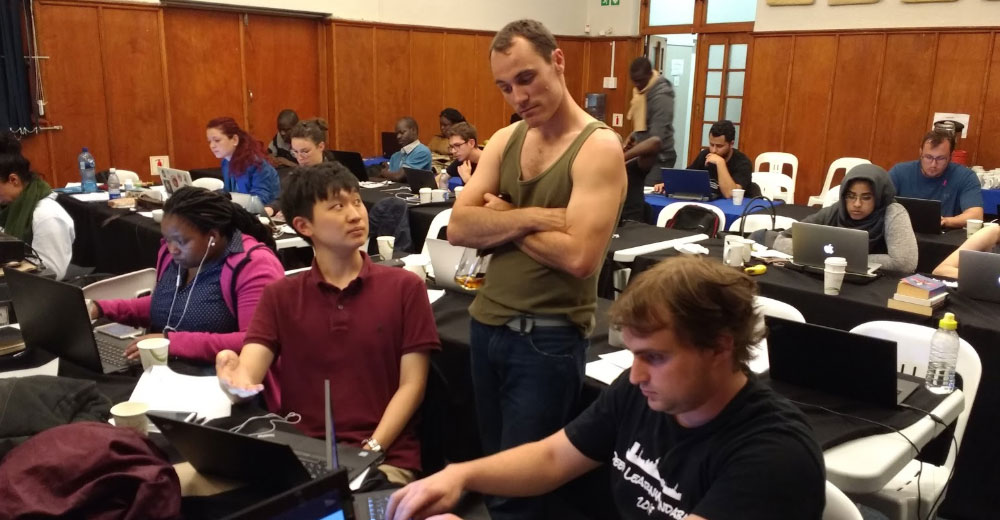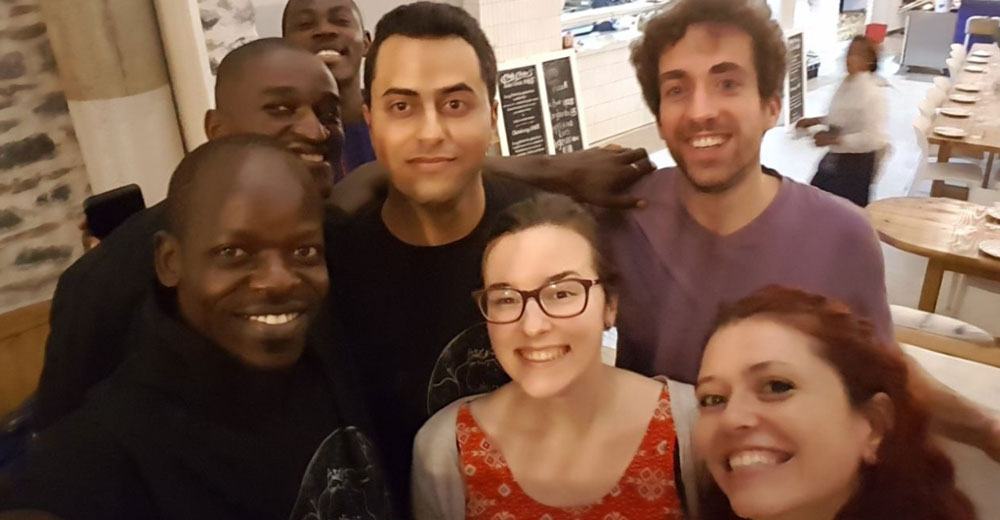Roach legs twitch to the stimulating sounds of neuroscience in Africa

The 2018 edition of the ISi-CNI workshop created new African and global neuroscience research networks in January 2018 in Cape Town, South Africa. This year’s workshop continued to build collaborations and sent signals throughout the African continent, encouraging participants to expand their horizons in the field of computational neuroscience. The organisers are part of the Neuroscience Institute, a new trans-disciplinary research entity that focuses on African neuroscience challenges and development.

The Kenyan-born Dr George Obiero has studied the brains of insects but never did he play Papa Roach in his lab in Germany while doing so. Using audio signals from the song Last Resort was one new experience among many for Obiero who attended the 2018 IBRO-SIMONS Computational Neuroscience Imbizo, or ISi-CNI, held in the vibey surfer’s paradise of Muizenberg in Cape Town.
ISi-CNI was an opportunity for students to learn about cutting-edge research techniques in computational neuroscience; it was also a chance to build social connections that could lead to collaboration and partnerships in future. Obiero was one of about 30 African and international students who spent three weeks learning about neural anatomy and higher order brain function; biophysics, plasticity and machine learning; as well as learning about computations in spiking networks.

In an effort to stimulate a sense of wonder, the participants were asked to use music converted to electrical signals to quiver an African cockroach leg. The Frankenstein-esque exercise was familiar to Obiero, who studies genes involved in neurotransmitters in insects at the Max Planck Institute for Chemical Ecology, but the use of music was a first for him.
The ISi-CNI team of international instructors designed the workshop to be most beneficial to students at the end of their Masters or beginning of their PhD studies. As a post-doctoral researcher, Obiero says the school has given him the idea to introduce the theory of computational neuroscience to his Masters students back home in Kenya, and encourage them to pursue studies in this area.
He attended informative lectures, practicals in the afternoons, and he joined the rest of the participants in the social activities ISi-CNI organised in the evening. From those social events Obiero made connections and networks with professionals in other fields around neuroscience that he might not have otherwise made without the workshop.

Organisers Alex Antrobus (UCT), Peter Latham (University of Oxford), Joseph Raimondo (Neuroscience Institute, UCT), and Tim Vogels (University College London) wanted the ISi-CNI network to take pioneering steps and set the stage to build an academic sector in the field of computational neuroscience in Africa.
The workshop was in line with Obiero’s research interests, which include what goes on inside the insect brain. He found it refreshing learning for the first time about synaptic plasticity during the second week. The sessions also brought back the importance of mathematics for him, which was featured when discussing how to model neuron activity mathematically.
He also values the networks and connections he has made with professionals in other fields around neuroscience.
"I see the global face here; the trainers were very easy to work with and there was a lot of cohesion in the classes,” he says. “I made a lot of connections and I am looking forward to seeing what we can do together in future.”
